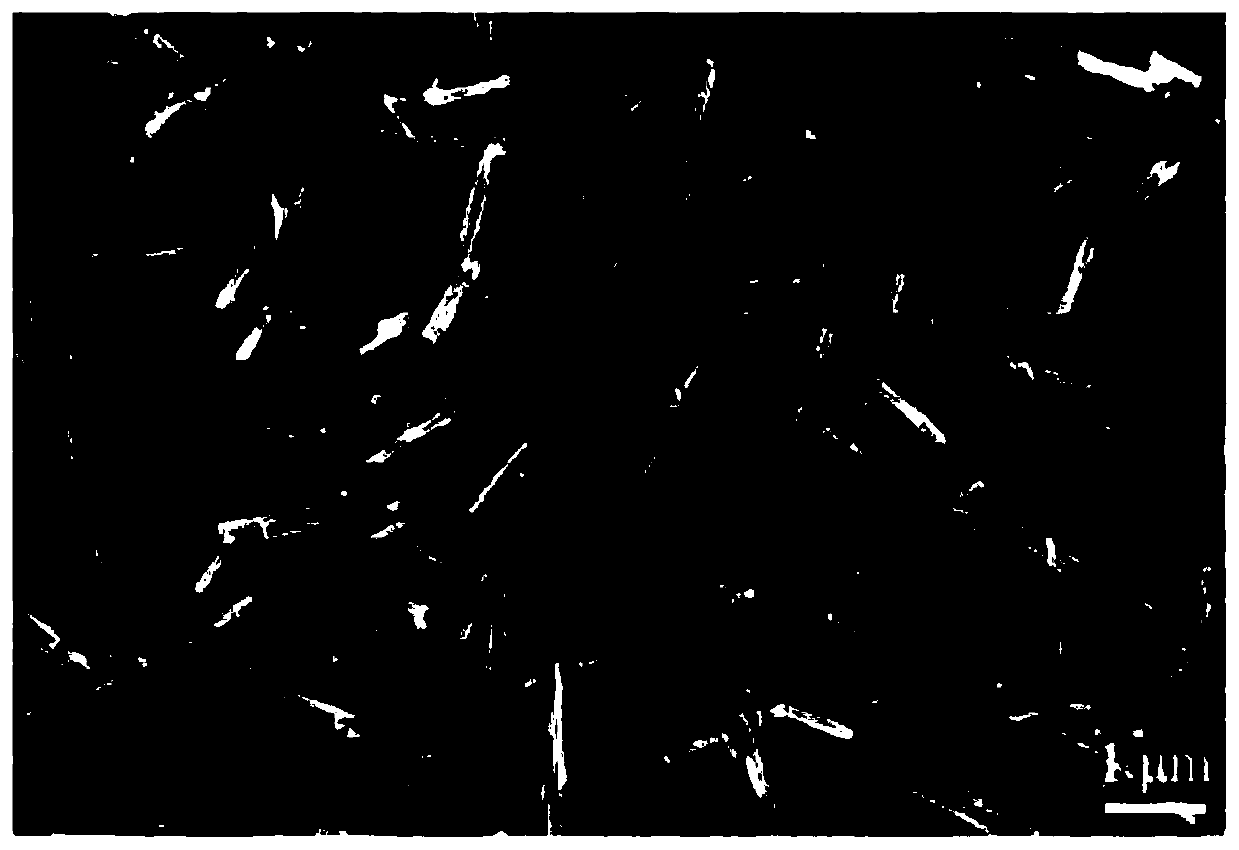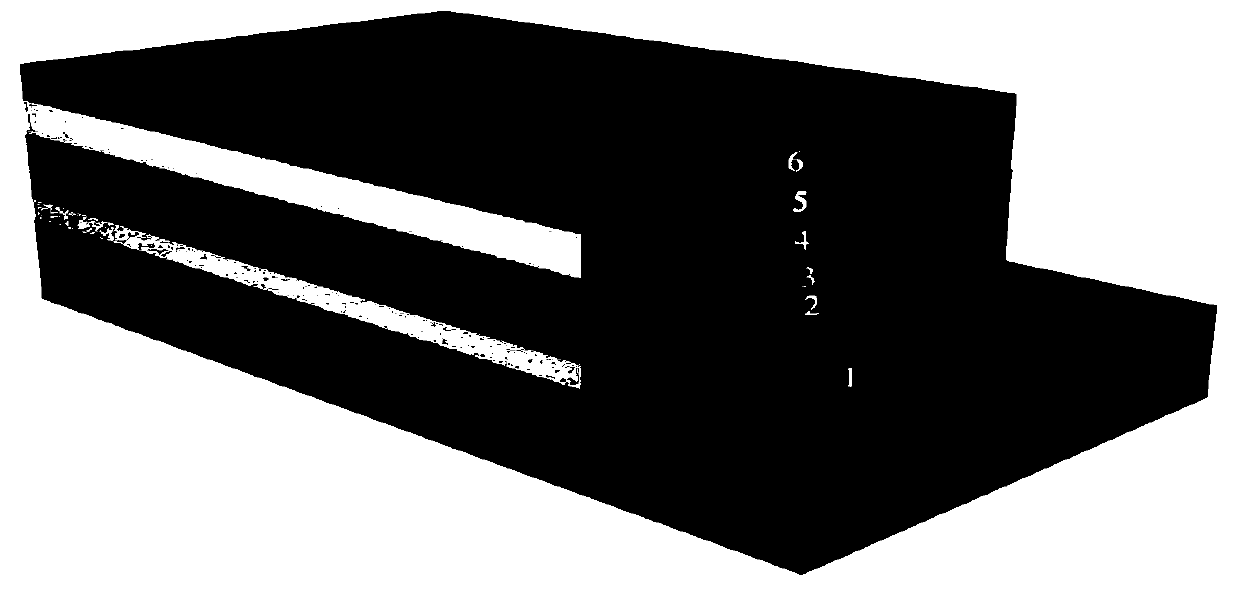h x moo 3-y nanomaterials, h x moo 3-y Electrode and solar cell comprising same and preparation method
A solar cell, hxmoo3-y technology, applied in the field of solar cells, can solve the problems of expensive work function of electrode materials, high cost and stability of solar cells, mismatch, etc., and achieves reduction of charge transfer barrier, low production cost, and electrical conductivity. Sexual effect
- Summary
- Abstract
- Description
- Claims
- Application Information
AI Technical Summary
Problems solved by technology
Method used
Image
Examples
preparation example Construction
[0064] The mesoporous framework layer can be prepared by mixing the material of the mesoporous framework layer such as Al 2 O 3 or ZrO 2 The solution was spin-coated on the mesoporous electron transport layer.
[0065] Then, set H x MoO 3-y The dispersion liquid is spin-coated or sprayed on the mesoporous framework layer, and heated at 40-200 ° C for 10-70 minutes to obtain H x MoO 3-y Thin film electrodes. As mentioned above, the H x MoO 3-y The dispersion can be obtained by applying the H x MoO 3-y Nanomaterials are obtained by dispersing in organic solvents. Preferably, one or more organic solvents selected from chlorobenzene, isopropanol or ethanol can be used to form the dispersion.
[0066]Finally, the solution containing the perovskite light-absorbing material can be infiltrated into the mesoporous framework layer and electrode layer and annealed. Specifically, the prepared perovskite solution can be drop-coated on H x MoO 3-y The electrode is infiltrated ...
Embodiment 1
[0072] Example 1: H x MoO 3-y Preparation of Nanomaterials
[0073] Prepare H as follows x MoO 3-y powder:
[0074] (1) 1g of molybdenum powder was added to 20mL of H 2 O 2 In the ice bath, molybdenum powder was mixed with H 2 O 2 The reaction was stirred for 2 to 4 hours.
[0075] (2) The above solution was put into the reaction kettle, and the hydrothermal reaction was carried out at 180° C. for 2d to obtain a milky white product.
[0076] (3) Wash the above milky white product with deionized water and absolute ethanol for 3 times and place it in a drying oven to dry to obtain MoO 3 White powder.
[0077] (4) Weigh 0.1g of MoO 3 White powder, 20 mL of acetic acid was added to it for 2 h, and then 2 mL of HI was added to the mixed solution for treatment for 5 d to obtain a dark green solution, which was washed with saturated sodium bicarbonate aqueous solution, deionized water, and absolute ethanol for 3 times in turn and placed in a The dark green powder is obtai...
Embodiment 2
[0078] Example 2: Preparation of perovskite solar cell SC-1
[0079] Prepared as follows figure 2 The perovskite solar cell SC-1 with the indicated device structure, as shown in Figure 2, includes a transparent conductive substrate, a hole blocking layer, a mesoporous electron transport layer, a mesoporous framework layer and an electrode layer sequentially distributed from bottom to top , the perovskite light-absorbing material is filled into the mesoporous framework layer and the electrode layer:
[0080] (1) cleaning: the FTO conductive glass substrate is placed in the ultrasonic cleaner successively with PH=8 weak alkaline liquid detergent, deionized water, dehydrated alcohol, and acetone for each cleaning for 5 minutes;
[0081] (2) Preparation of hole blocking layer: The cleaned FTO conductive glass substrate was heated at 500°C, and the prepared 0.05mol / L isopropyl titanate isopropanol solution was sprayed on the substrate and heated for 20 minutes. Form about 60nm d...
PUM
| Property | Measurement | Unit |
|---|---|---|
| diameter | aaaaa | aaaaa |
| length | aaaaa | aaaaa |
| thickness | aaaaa | aaaaa |
Abstract
Description
Claims
Application Information
 Login to View More
Login to View More - R&D
- Intellectual Property
- Life Sciences
- Materials
- Tech Scout
- Unparalleled Data Quality
- Higher Quality Content
- 60% Fewer Hallucinations
Browse by: Latest US Patents, China's latest patents, Technical Efficacy Thesaurus, Application Domain, Technology Topic, Popular Technical Reports.
© 2025 PatSnap. All rights reserved.Legal|Privacy policy|Modern Slavery Act Transparency Statement|Sitemap|About US| Contact US: help@patsnap.com



